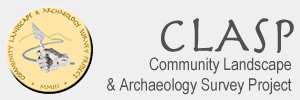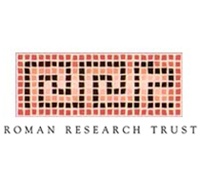Blog Archives
Artefacts & container moved to CLASP Field Centre
From Dave Hayward, Chair of CLASP Trustees:
At last we have all of our artefacts and our shipping container moved to the new Field Centre from its previous home at Whitehall Farm. This means that we are now complete at our new home and we can move forward with a stable life to develop both our members and our future research programme. As Chair of Trustees I am keen to see not only our existing members participating in this future but also as many new members as we can recruit.
Can I also thank all of you that were involved with the move of a seemingly endless line of dirty boxes of artefacts onto and off of the lorry between the two sites. It is probably fair to say that there were more boxes than what we had estimated – there did seem many painful backs by the end of the day! (At least a couple of boxes came complete with old mouse nests!)
I anticipate photos of the event will follow.
Heyford Books have posted a video of the move on the CLASP Facebook page
CLASP AGM, Wednesday 9th October
Annual General Meeting of CLASP
All members of CLASP are warmly invited to this meeting, to be held at
Harpole Bowls Club, Larkhall Lane, Harpole, NN7 4DP,
7 p.m. on Wednesday 9th October 2019
Agenda
1. Apologies for absence
2. Receive and approve the Minutes of the 2018 AGM
3. Matters arising
4. Report by the Chair of Trustees
5. Report by the Treasurer
6. Report by the Chair of the Organising Committee
7. Any other business – to be notified to the Chair of Trustees prior to the start of the meeting and should be urgent and non-controversial
Non-members coming to the Public Meeting are welcome to attend this first part, which will give an idea of CLASP’s organisational structure.
The meeting will be brief and will be followed by the public meeting with talks about CLASP’s activities, field work, excavations – and future needs.
2019 dig at the Whitehall Farm Anglo-Saxon Cemetery
Report by Steve Young,  CLASP Archaeology Director
CLASP Archaeology Director
The 2019 fieldwork on the site of the Post Roman and Anglo Saxon burial ground at Whitehall Farm revealed the location of twelve new graves of which nine were excavated.
This brings the total number of known complete inhumations to twenty-eight with extraneous fragmentary skeletons implying the burial ground population included at least thirty five individuals.
Most of the burials explored formed part of a linear row of graves aligned roughly on a north/south axis. This is consistent with previous excavated evidence indicating that the 5th century AD interments were laid out according to a structured grid alignment similar to those recorded at Cannington, Somerset and Lankhills, Winchester.
Our current understanding of the grave locations is indicative of four or five linear rows containing between eight and ten inhumations per line suggesting the presence of a sizeable community within the locality and the probability that many more graves remain to be identified.
The position of the individual graves also appear to be evenly spaced along the row, respecting the overall pattern of the graveyard. Six of the inhumations associated with the row have a west/east alignment with their heads positioned at the west end of the grave and all of the skeletons being interred without grave goods.
One grave contained a young woman complete with perinatal foetus who had probably died in child birth; another contained a child, whilst yet another held the first instance of a deviant burial from the 5th century AD graveyard. Laid into the grave face down the skeleton was also minus its feet which may have been cut off prior to death. Two other skeletons of the same date were excavated with the position of their graves implying that they were lying in neighbouring rows of graves. One of these individuals was buried with a personal iron knife placed at the hip whilst the other was interred with a range of grave goods, suggesting a person of status. The grave goods include a spear, shield boss and a copper alloy strap end with associated belt clasps located on the hip and shoulder.
A further burial aligned north/south associated with late 6th to early 7th century interments was also excavated. This skeleton was male and had been buried with a spear and shield boss as had been recorded in the other burials of this date. It also demonstrated that potentially bodies from this period of interment can be found further to the north in the burial distribution than previously expected.
Could you be CLASP’s new Webmaster?
I’m looking to reduce my commitments by handing over the role of CLASP Webmaster to a willing and able volunteer.
The role involves managing CLASP’s online assets which are:
– the claspweb.org.uk website, domain names and hosting (all in one account);
– the claspweb Yahoo mailing groups;
– the CLASP Google Drive account;
– the CLASP Vimeo account.
I also keep an eye on the CLASP Facebook page: Gina Brown runs that, but occasionally she welcomes support.
The claspweb.org.uk website is a WordPress site: it’s a relatively straightforward one, but a reasonable knowledge and experience of WordPress is needed to edit it. The Whitehall and Local People websites are native html sites (produced in Dreamweaver) stored on the same server as the main website: they are essentially archives, and should not need editing.
All the accounts are owned by CLASP – at the moment Dave Hayward (as Chair) is the named owner, and he takes care of all payments, so that is not required of the webmaster.
I will be happy to be an advisory backstop for as long as necessary for the new webmaster to feel confident to carry on alone – but I am not willing to give training in any aspect of the technical management, for example, WordPress.
Interested? Please email me at webmaster@claspweb.org.uk if you’d like to explore this.
Jeremy Cooper
Successful days at Borough Hill
Comments from the CLASP Facebook group:
- Great afternoon on Borough Hill. 50+ people braved the weather to learn about local history. Fun, informative, spreading the message.
- Thank you so much for the opportunity to see the work that has been done on Borough Hill. My children and I were fascinated, a really lovely opportunity to see the past alive on our doorstep.
Waitrose Daventry collection for CLASP in September
Waitrose have agreed to have a community collection for CLASP at their Daventry store during September – please put the green tokens in!
Thanks to Chris Mawby for this initiative.
The MOLA/CLASP Borough Hill Project – website launched!
A message from Dave Hayward, Chair of CLASP Trustees:
“As many of you are already aware CLASP has been participating with MOLA in a joint project researching the archaeological history of the enigmatic Borough Hill, Daventry. The first phase of this work, documentary research, geophysical survey and drone flyovers is now complete with interpretation being finalised. To ensure that these results are put into the wider public domain MOLA has prepared a superb interactive website that has been launched this week.
The website address is:- https://arcg.is/0uuHrO
For the future this work will continue, hopefully moving into excavations during the next couple of years. CLASP members will of course be able to participate in the future phases of this joint project.









